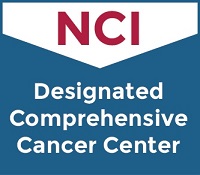Esophagectomy
Surgery for esophageal cancer is an option for patients with early stage to more advanced cancers that have not spread elsewhere in the body. The cancer must be located within the middle to the end of the esophagus near the stomach, and it may also cross over into the top portion of the stomach.
The surgery to remove the part of the esophagus with the cancer is called an esophagectomy. (If a part of the stomach is also removed, the procedure is called an esophagogastrectomy.) About two-thirds of the esophagus will be removed. The surgeon will then create a tube, or "conduit," out of the remaining stomach to take the place of the esophagus and reconnect it to the remaining portion of the esophagus.
The areas around the esophagus are checked to make sure they are free of cancer cells. Also, throughout the entire case, lymph nodes are removed to be examined for any cancer. The presence or not of cancer in these lymph nodes will allow doctors to know what future treatment should involve.
Esophagus Surgery: Minimally Invasive vs. Open
In some cases, it may be possible for surgeons to perform an esophagectomy in a minimally invasive way. Instead of involving large incisions of several inches each, minimally invasive procedures involve multiple small incisions both in the upper abdomen and on the chest between the ribs on the side. The surgeon uses a camera and video screen to see inside the body and perform the operation. Minimally invasive surgery can result in less postoperative pain and a faster recovery.
In an open esophagectomy, UMGCCC surgeons make an incision in the middle of the abdomen called a laparotomy and an incision between the ribs below the shoulder blade on the side of the back called a thoracotomy. Open procedures take the surgeon less time, which means that patients are under general anesthesia for a shorter period of time. Also, patients who have had prior radiation therapy or surgery may have scarring that requires the surgeon to take an open surgery approach.


